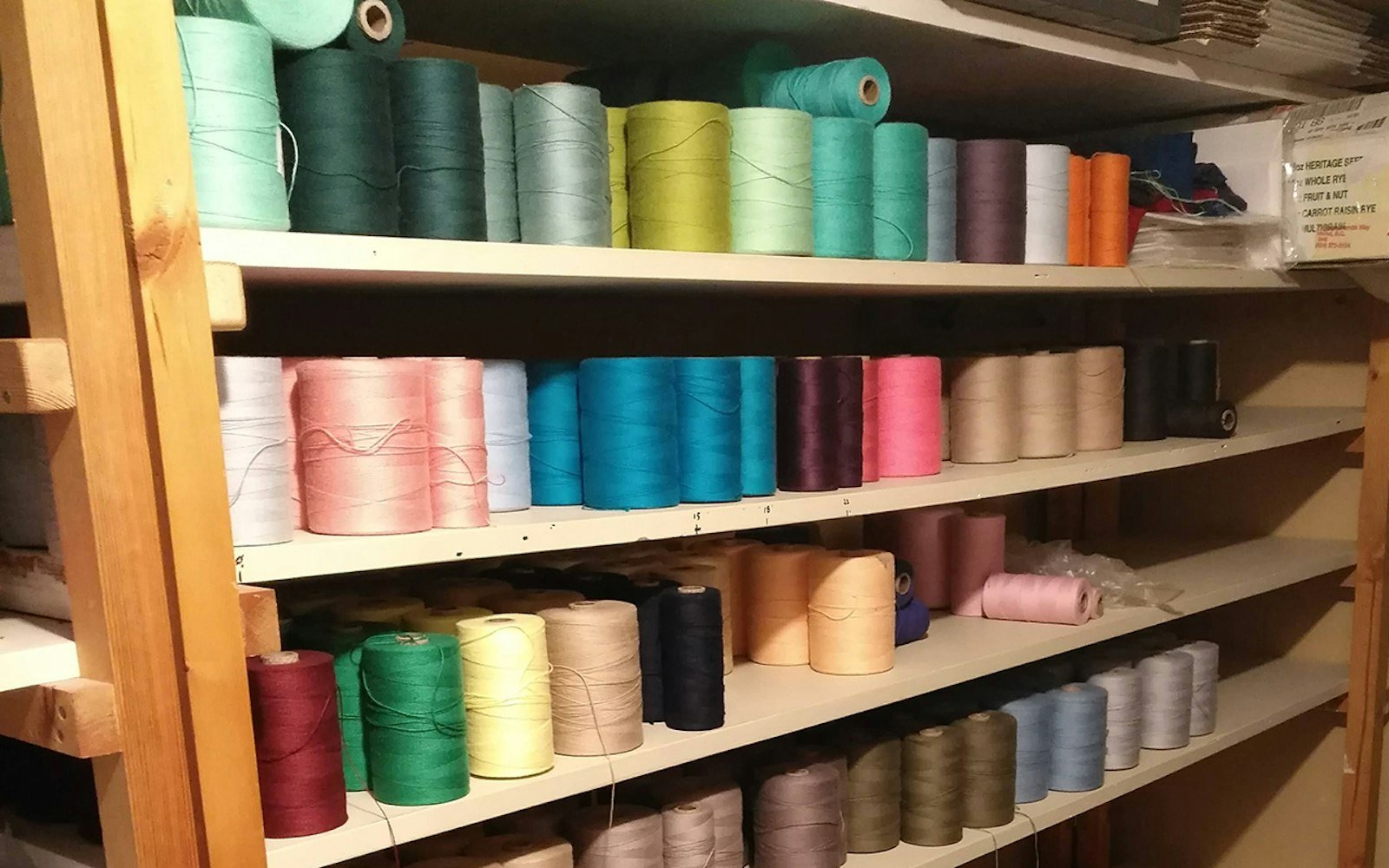We all have stashes, but some of us have more than others. Here is Laura Fry talking about her stashes and suggestions for how to disperse stashes and equipment when you can no longer use them. —Susan
When I began weaving in my mid-20s I wasn’t concerned about having too much stash; in fact I wanted to build a stash. The local yarn shop didn’t have much in the way of weaving yarns, and I planned to sell my textiles, so I bought at wholesale prices, in quantity, by mail. As a production weaver, I need a good stash to dip into when I am designing a textile.
Over the years, I accumulated, used, stopped using, got rid of, and bought different yarns. I even had multiple stashes—one each for production weaving, teaching, writing, and dyeing/selling. I had a lot of stash! To make matters worse, or better depending on your outlook, I was also the recipient of several yarn stashes from friends who, for one reason or another, could no longer weave.
Since I was young (and immortal), I never worried too much about what would happen to my things should the time come to stop weaving. I knew that at least my husband knew the contents of my studio were valuable and that if I couldn’t do it, he would find new homes for it all.
This is how I operated until 2008, when both my husband and I had a bit of a wake-up call that prompted us to have new wills drawn up to replace wills that were decades out of date. At the same time, I realized that although I had made good headway in weaving down much of my stash, I still had and have way too much yarn! While working on the new wills, I asked a younger friend if she would help get rid of my studio if I couldn’t, and she agreed.
More recently, I had to face the fact that it was time for me to retire from production weaving. I had already given up importing, dyeing, and selling yarns, and I no longer teach for guilds, but I was still production weaving. Like many of my friends, I am reaching an age when physical limitations are starting to crop up.
Periodically, weavers have to give up weaving due to illness or injury, or perhaps they pass away, and often their family doesn’t really know what to do with their studio contents. My guild frequently arrives at its meeting place to discover on our doorstep spinning wheels, looms, boxes of yarn, and books for which we try to find homes. Sadly, sometimes stashes and equipment are simply loaded up and taken to a landfill.
In the past few years, I have helped disperse three weavers’ studios. One friend left me her entire yarn stash that weighed about 2,000 pounds. I couldn’t possibly take all of it, so I arranged with her husband that I would sort it, take what I could use, and throw out anything that wasn’t usable (some yarns had been poorly stored). He donated the rest to her local guild to be sold, with the proceeds going into the guild’s scholarship fund in her memory.
For another friend, I sold a lot of her things on eBay, working with another friend who did the bulk of the sorting and transporting.
The third friend was Ingrid Boesel, who had an extensive silk collection that is now in my studio. I promised her family that if I couldn’t use it, I would get it to people who could and would use it.

Ingrid’s beautiful silk stash.
Yarn, looms, and other weaving equipment are not cheap, and it’s never too early to think about what you would like to have happen to your studio contents. You can include bequests in your will, but it is a good idea to check with the recipient to make sure that they can accept such a gift. They may be trying to downsize, they may be allergic to that lovely wool you were thinking they would love, or they might not have room for what you are giving them.
Here are some things to think about when it comes to stash. Mostly it comes down to communicating and writing your wishes down:
Determine what you have and the ideal distribution of your stash, equipment, and library.
Talk to family members. Let them know what you would like done and put it in writing.
Check with your friends to see whether they want or need any of your studio contents. Include that information with your will.
Help your family find buyers or other recipients for your stash and equipment. Give them the names and email addresses of other textile artists and contact information for guilds and other organizations that may be interested in purchasing and/or receiving your stash.
Let your family know that some of the books in your fiber library could be considered collector’s items and could be quite valuable. Better yet, make a list of the books that are special.
Label your yarns. At the very least, label them with the fiber type. You get bonus points if you include the yarn size and the yards/pound.
Label your equipment with the make, model, size, and date of purchase if you have it.
Label any unique equipment with a short description of its purpose.
For myself, I may be “retired” from production weaving and doing craft fairs, but I look forward to weaving becoming my hobby, exploring, perhaps writing, teaching on-line.... and weaving down as much of my stash as I can, while I still can!

